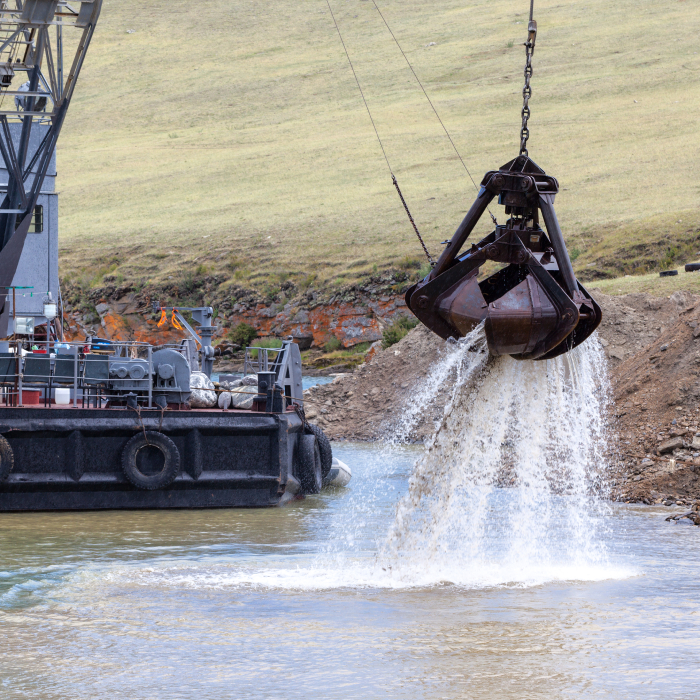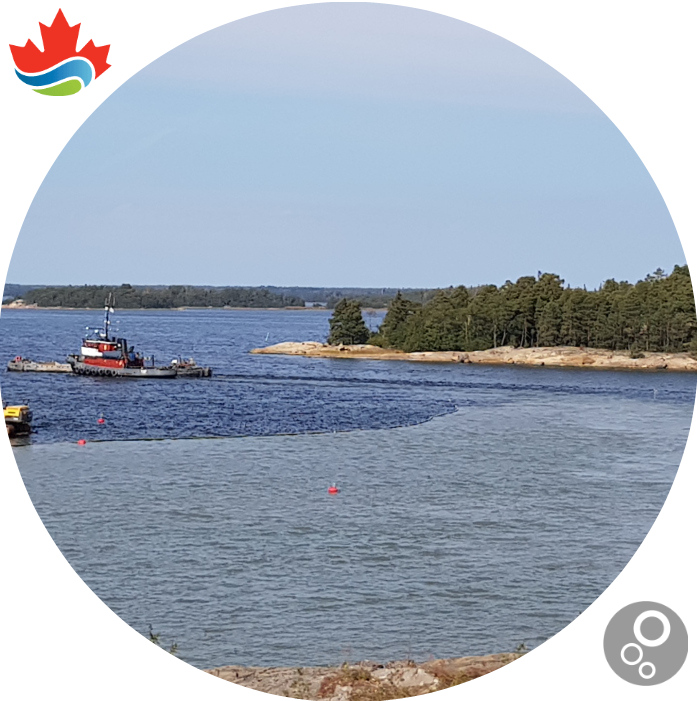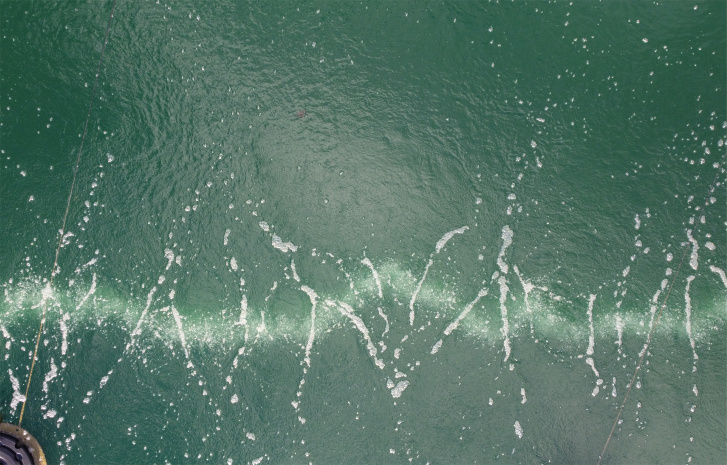Sediment Control
Bubble Curtain as a Sediment Barrier
Complementary Tool to Limit the Spread of Suspended Solids in Water
Typically during dredging or maritime works, there is a dispersion of suspended matter in the water. These materials are often retained by physical barriers called sediment barriers.
They allow the retention in place of fine materials that can be dangerous for the aquatic environment and which can, for example, cover spawning grounds or modify the fragile habitat of aquatic species.
These techniques are well known and implemented throughout the world. What is less known is the use of a bubble barrier as a complement to physical barriers.
The physical barriers have one main fault, they are fixed and cannot allow the free passage of boats or living species. Also, during dredging, opening these barriers releases a large amount of suspended matter.
By using a bubble curtain combined with a physical barrier, an opening is created which will allow free passage and which can also retain suspended sediments during the activities.
Installing a retention curtain like the one from Bubble Tubing® is an effective solution to contain sediment and prevent the water from becoming cloudy outside of maritime work areas. This efficient method facilitates maritime transport in several types of industrial applications.
These bubble barriers, whether single or double (or even triple in certain specific cases for the management of very fine sediments), are easily set up at different depths and in different types of marine environments such as seaports, rivers, bays, lakes and reservoirs.
Specific designs and configurations are created by the Bubble Tubing® team. Very resistant, reusable and ecological, bubble curtains act as sediment barriers and also allows for an increase in the level of dissolved oxygen in the water – a good solution to provide a certain level of mitigation during work or impact on the marine environment!
Bubble curtains have also been shown to be effective in preventing the discharge of sediment from rivers rich in mineral alluvium to areas without current, such as dead end sea entrances or canals. Typically, rivers similar to the Mississippi River transports millions of cubic meters of sediment in normal times and even more during floods or after heavy rains. Side channels built for shipping are places that must be constantly dredged to maintain a minimum depth for shipping. A bubble curtain at the mouth prevents clear water from mixing with sediment-laden water. Although sedimentation will still be present, it will be greatly reduced. The typical sand banks of these mouths can thus be better managed, thus reducing the significant costs associated with dredging and the associated environmental impacts.
Definition of the Sediment Retention Barrier:
The Bubble Tubing® retention barrier, also known as the turbidity curtain, is based on the creation of a bubble wall that rises from the bottom of the water to the surface. It acts on both fines and larger sediment particles. These barriers are either designed as a single, double or triple line system, depending on the needs and nature of the sediment or the fragility of the environment to be protected.
The curtains are fed by a compressor and the injected air flow is modulated according to the desired density for each curtain of air bubbles.
How to Optimize Retention Barriers?
Our experienced engineers will optimize the efficiency of your fixed sediment retention barrier and advise you on the installation of one or more bubble curtains, depending on the scope of your project.
Who is this Application For?
Oil Companies
A bubble curtain is used in pumping basins to create a bubble curtain around the pumps.
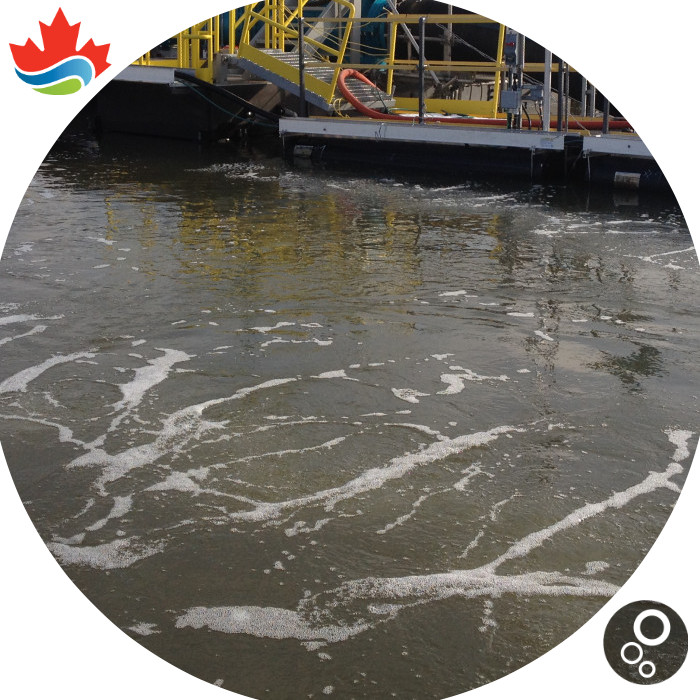
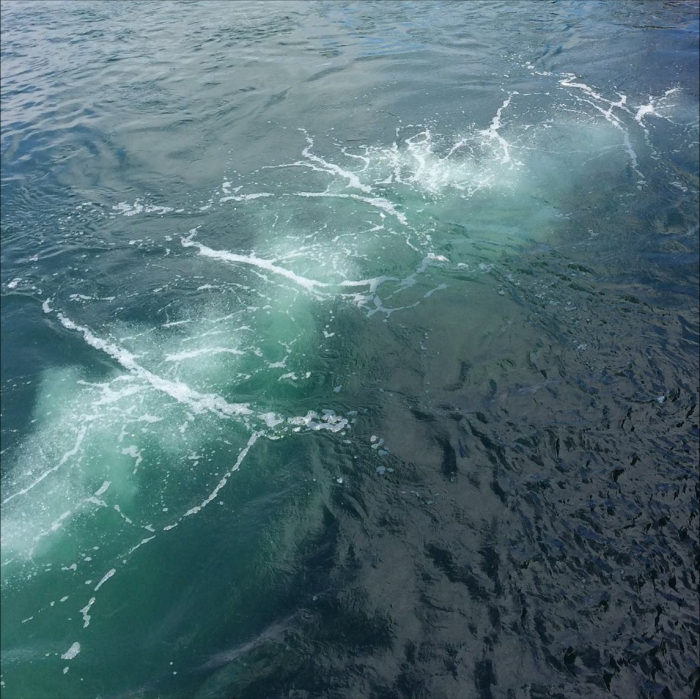
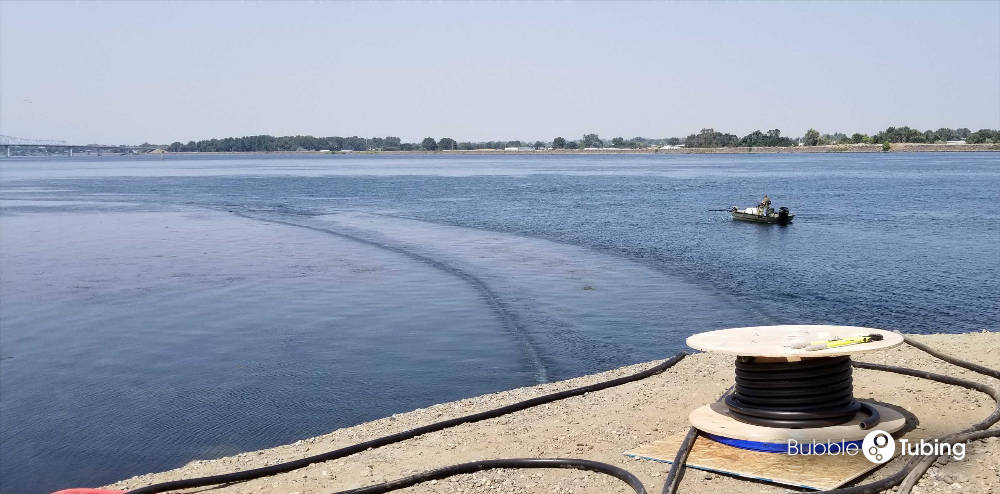
Marine Construction Companies
Dredging, blasting, excavation, drilling and pile driving are all jobs requiring sediment control that can be done with Bubble Tubing®.
